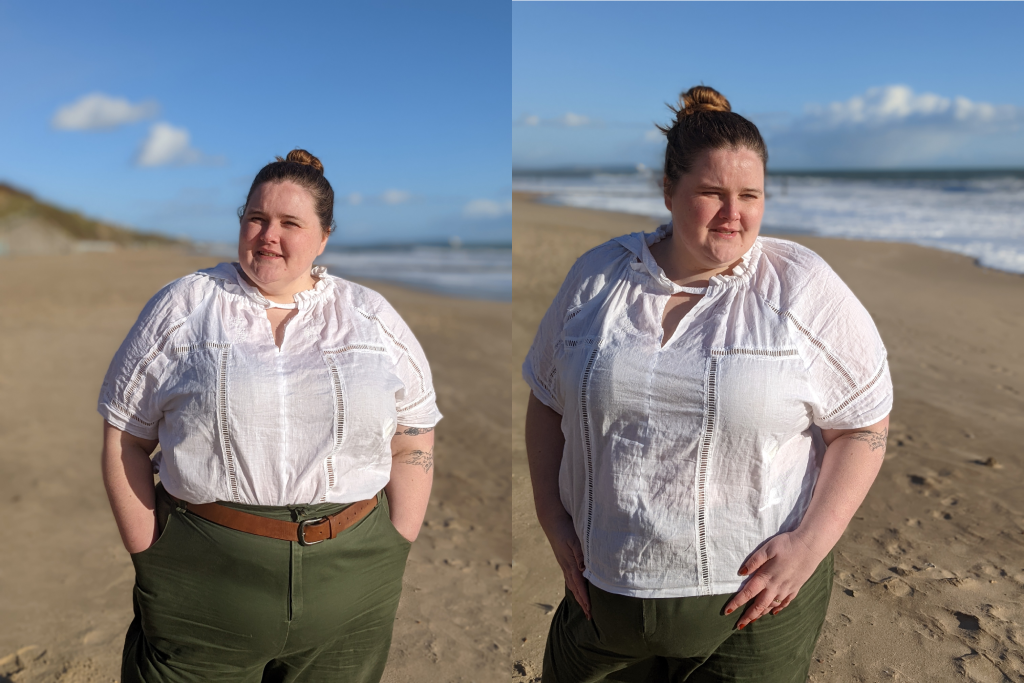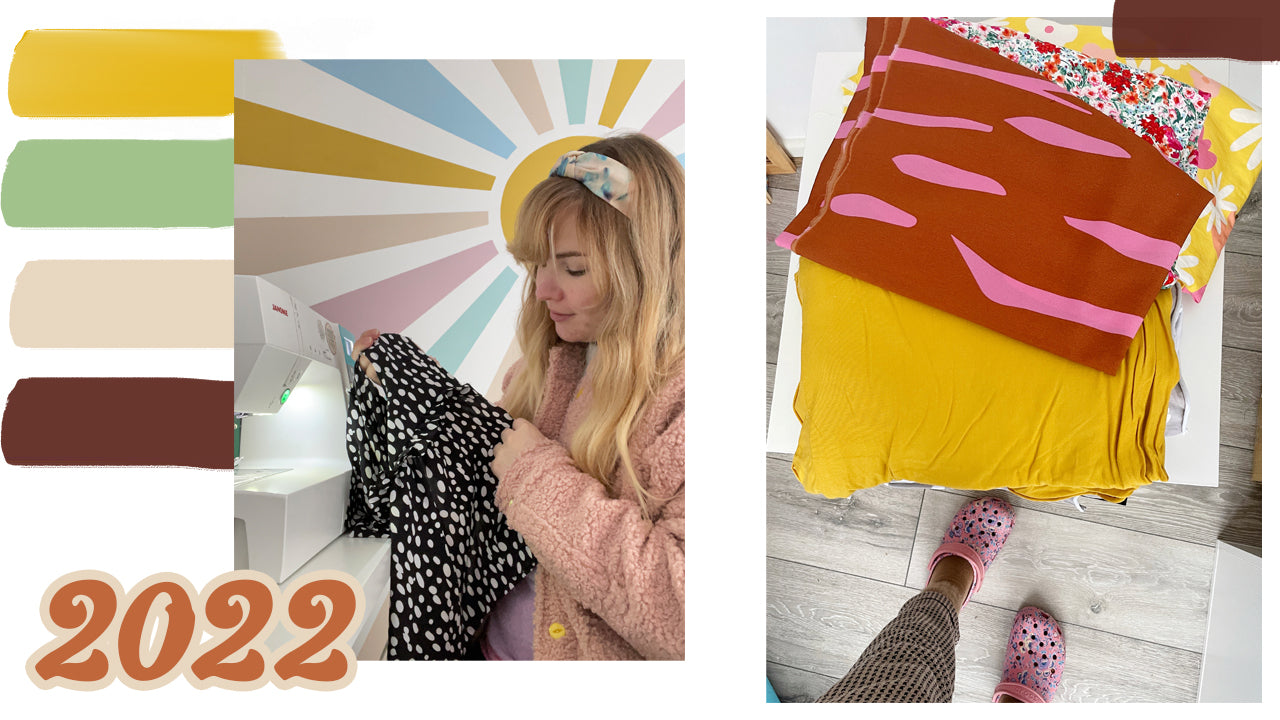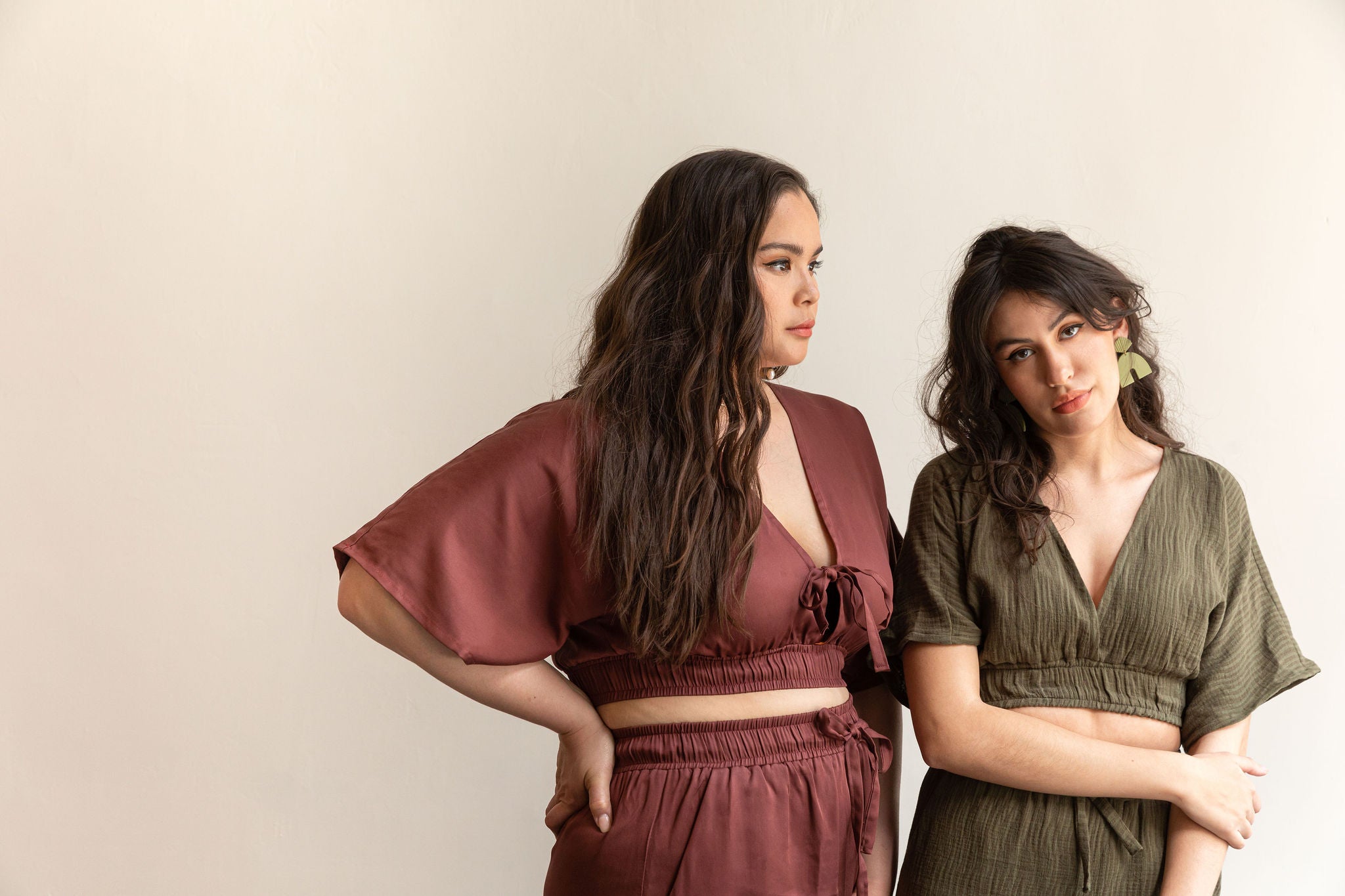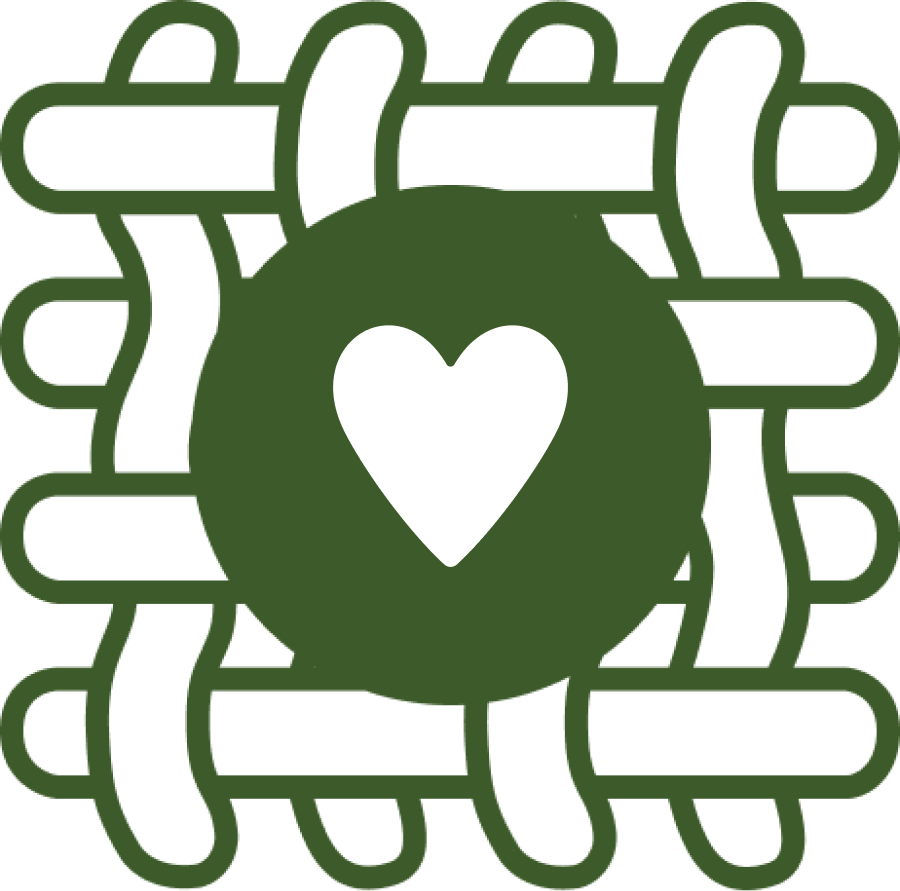Hello, I’m Ele and I’m on the Friday blog to talk to you about embroidery and give you some ideas for adding embroidery for your me-made garments. I talk through how to embroider by hand, on a machine and have free flower templates for you to use! February was National Embroidery Month and I challenged myself to embroider every day - you can see how I got on, on instagram.

I love adding embroidery to my makes, it means I can add extra decoration or a detail to make the garment even more special. By adding the embroidery, it becomes a treasured item that I am more likely to look after, care for and wear. It means it is more sustainable and better for the planet because I tend to wear these items on repeat and also mend them.
For example, I added embroidery to the front yoke pieces of my Davenport Dress in a beautiful gold colour that matched the fabric. It reminds me of opulent Tudor embroidery, almost like armour on my shoulders.

These designs were digitised by me in Embroidery Software called mySewnet (https://mysewnet.com/) (note: I am a Husqvarna Viking ambassador and receive free software as part of the programme). It is a computer design programme where you plot the stitches for an embroidery machine to follow. I then transfer the design to my embroidery machine which stitches them on. It’s similar to how a 3D printer works - but in 2D. You can buy embroidery designs online that you can load onto your embroidery-compatible-machine to stitch out.

In this blog I’m going to show you how to add some hand embroidered elements to your garments. In a previous guest post on this blog, I added lace inserts to a Wilder Blouse, and I’m going to revisit this top to add the embroidery.
Adding embroidery to a garment is all about personal preference. You could unpick a pocket from a pair of jeans, add some embroidery and stitch it back. You can place embroidery practically anywhere. If you’re adding embroidery to a garment you’re making, I’d recommend doing the embroidery before you construct the garment, it makes it more straight forward if you’re stitching on a flat pattern piece, rather than navigating seams. I like to draw out my pattern piece, and cut it out with enough space around it so it’ll fit properly in my hoop.

For my top, I wanted to add embroidery to each side panel, so I measured the size from top to bottom, and side to side, and marked out the centre point. Then, I drew a box around the edge of my design to make it easier to measure its size, then I drew this around my centre spot. Remember, our bodies aren’t symmetrical so it doesn’t matter if your embroidery isn’t exactly central. People will admire your handiwork and gush over that and won’t notice it so don’t point it out, accept the praise. You embroidered something!
Here are some top tips for getting the best result with your hand embroidery:
- Use the right needle, and make sure it’s new and sharp - especially if you’re embroidering a thicker fabric.
- Use a thimble - it can be a metal, plastic or leather, whatever your personal preference but it’ll save your fingers from getting poked repeatedly.
- Stabiliser! While not always necessary for all fabrics, this helps to give the fabric more stability and you are less likely to get puckers in your fabric with stitches. You can get lots of types of stabiliser but I’d recommend one you can iron on for extra stability, and also wash-away so it’ll disappear after you’ve finished your embroidery. I like to use the Solvy brand.
- Keep your hands clean. Like the ‘petite mains’ in couture houses, in their white lab coats do.
- Go easy! Especially if you’re new, take it at your own pace, remember to stretch and not hunch over your hoop. Whatever you create is an achievement, do what brings you joy.
- Find inspiration! The V&A has an amazing collection of embroidery (https://www.vam.ac.uk/collections/embroidery) , the Internet Archive has some amazing vintage embroidery patterns you can use (https://archive.org/search.php?query=embroidery) , and instagram is a goldmine of incredible creators (https://www.instagram.com/explore/tags/embroidery/). I also love Pinterest for inspiration.
I’ve created both a hand embroidery and a machine embroidery version of the same design AND given you the template/file so you can give them a go yourself. I wanted to show the difference between them, and the similarities. I am by no means an expert at embroidery, but I love doing it and enjoy challenging myself and trying new textures and shapes and colours.
*EMBROIDERY TEMPLATES - Download ALL Here
- Print out your design OR load it on your tablet/phone - there are apps like Lightbox that let you turn your screen into a lightbox by letting you add images, then locking the screen so the image doesn’t move around as you trace it.

- Trace your design using your computer screen or by using a window on a sunny day! You can do this directly on your fabric - but unless it's a scrap fabric you’re practising on or you are 100% sure it washes out, test it first! I’ve traced my design onto a stabiliser that I will iron onto the back of my fabric.

- Hoop it up - be sure you get good surface tension, but make sure you don’t stretch it so much the fabric warps as this will cause puckers when you unhoop. Another good reason to use stabiliser - it will help support your fabric even more when in your embroidery hoop.

- Choose your thread/floss colour! I’ve gone for white on white to fit the Edwardian vibes of my shirt, but as these are violets (the February birthday flower!) you can see below for their natural colourings. Or go in a completely different direction and do a green flower with an orange stem.

- Prep your floss. Most embroidery floss is made up of six strands of thread. The amount you use depends on the effect you want. It’s good to start with 3 strands of thread and do some test stitches, then add or remove threads until you’re happy with the thickness of your stitches.

- Start stitching! I chose to do a satin stitch on my flowers, the fishbone stitch on the leaves, and then a chain stitch for the stems and french knots for the centre. There are so many different stitches you can use, it’s worth finding a YouTuber you like and spending some time making a sampler of stitches - lots of different stitches on a piece of fabric.

When I’ve finished stitching, it’s time to remove the hoop and any stabiliser - I like to use wash-away which dissolves in warm water, or tear away, which makes the most satisfying sound when you pull it (carefully) away from the stitching.
MACHINE EMBROIDERY

I’ve created my design in the most common file formats: (Click to download)
If you want it in another format, drop me a message on Instagram. (linked below)
Hello, I’m Ele and I’m on the Friday blog to talk to you about embroidery and give you some ideas for adding embroidery for your me-made garments. I talk through how to embroider by hand, on a machine and have free flower templates for you to use! February was National Embroidery Month and I challenged myself to embroider every day - you can see how I got on, on instagram.
The design allows you to change the colour of each whole flower, the stems and leaves.
Below you can see the two versions side by side. The machine embroidery is neater, tighter, more regimented where the hand embroidery is gentler and has more texture. Which do you prefer?

Some more links and videos I like on hand embroidery:
- I’d highly recommend checking out Christi Johnson who has a book called Mystical Stitches about adding meaning to your stitches.
- This is a great video on how to start and stop your stitching, with two options.
- Sarah Homfrey is a British YouTuber who has videos on how to different embroidery stitches. This is a great introduction to outline stitches.
- How to do satin stitch
- How to do chain stitch
- How to do fishbone stitch
- How to do French knots
If you have any more questions, drop me a message on Instagram (instagram.com/sewnbyele) and I’ll do my best to help you out.
Thanks for reading!
Ele x
Follow Ele here on Instagram
Check out the Wilder Pattern here








Leave a comment
This site is protected by hCaptcha and the hCaptcha Privacy Policy and Terms of Service apply.